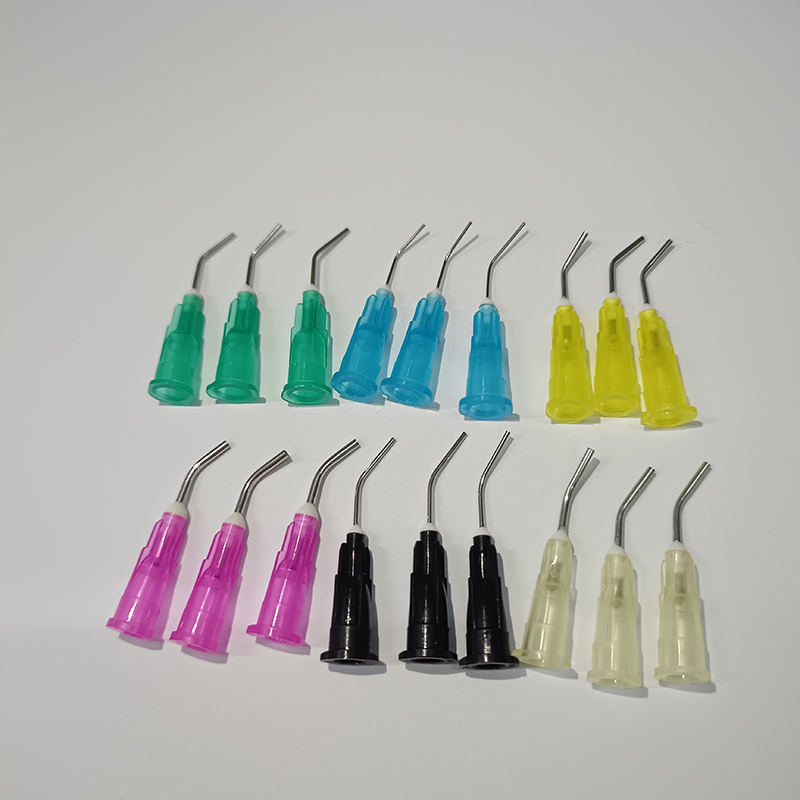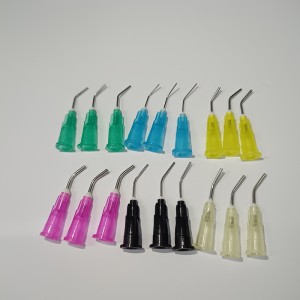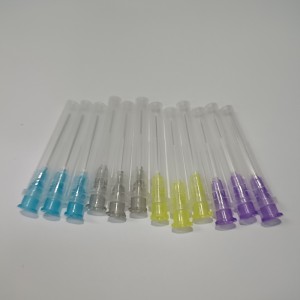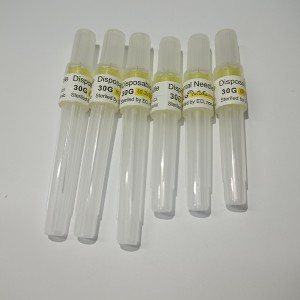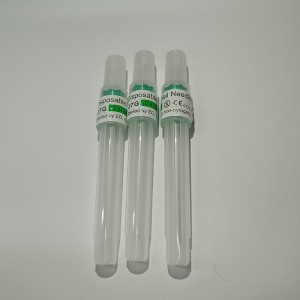Anetheasia use dental needle, irrigation use dental needle, dental needle for root canal treatment
A.Dental anesthesia needles and dental irrigation needles are commonly used tools in dental diagnosis and treatment. They play an important role in dental surgery and treatment. Their instructions and uses are detailed below.
1. Instructions and uses of dental anesthesia needles:
1. Instructions for use:
Dental anesthesia needles are usually made of stainless steel and have a certain curve to allow the doctor to make precise injections around the teeth. Before use, disinfection is required to ensure the cleanliness and sterility of the needle.
2. Purpose:
Dental anesthesia needles are mainly used to provide local anesthesia to patients. During dental surgery or treatment, the doctor will inject anesthetic drugs into the patient's gums or periodontal tissue to achieve anesthesia. The tip of an anesthetic needle is thin and can accurately penetrate tissue, allowing anesthetic drugs to quickly penetrate into the target area, thereby reducing the patient's pain.
2. Instructions and uses of dental irrigation needles:
1. Instructions for use:
Dental irrigation needles are usually made of stainless steel and have a long, thin barrel and a syringe. Before use, disinfection is required to ensure the cleanliness and sterility of the needle. The syringe is usually graduated so that the doctor can accurately control the amount of irrigation solution used.
2. Purpose:
Dental irrigation needles are mainly used to clean and rinse teeth and periodontal tissue. During dental treatment, the doctor may need to use rinses to clean the tooth surface, gums, periodontal pockets and other areas to remove bacteria and residues and promote oral health. The slender needle of the irrigation needle can accurately inject the irrigation liquid into the area that needs to be cleaned, thereby achieving cleaning and disinfection effects.
Summarize:
Dental anesthesia needles and dental irrigation needles are commonly used tools in dental diagnosis and treatment. They are used for local anesthesia and cleaning and irrigation respectively. Dental anesthesia needles can accurately inject anesthetic drugs to reduce the patient's pain; dental irrigation needles can accurately inject irrigation fluid to clean and disinfect teeth and periodontal tissues. Doctors need to pay attention to disinfection and aseptic handling when using these tools to ensure the safety and effectiveness of treatment.
B.Instructions for using dental needle for root canal treatment:
1. Preparation:
- Ensure that the dental needle is sterile and in good condition before use.
- Prepare the necessary materials for root canal treatment, such as local anesthesia, rubber dam, and dental files.
2. Anesthesia:
- Administer local anesthesia to the patient using the dental needle.
- Choose an appropriate gauge and length of the needle based on the patient's anatomy and the tooth being treated.
- Insert the needle into the desired area, such as the buccal or palatal side of the tooth, and slowly advance it until it reaches the target site.
- Aspirate to check for blood or any signs of intravascular injection before injecting the anesthetic solution.
- Inject the anesthetic solution slowly and steadily, ensuring patient comfort throughout the process.
3. Access and cleaning:
- After achieving adequate anesthesia, create access to the root canal system using dental drills.
- Use dental files to clean and shape the root canal, removing infected or necrotic tissue.
- During the cleaning process, periodically irrigate the root canal with an appropriate irrigating solution using a dental needle.
- Insert the needle into the root canal, ensuring it reaches the desired depth, and gently irrigate the canal to remove debris and disinfect the area.
4. Obturation:
- After thorough cleaning and shaping of the root canal, it is time for obturation.
- Use a dental needle to deliver the root canal sealer or filling material into the canal.
- Insert the needle into the canal and slowly inject the sealer or filling material, ensuring complete coverage of the canal walls.
- Remove any excess material and ensure a proper seal.
5. Post-treatment:
- After completing the root canal treatment, remove the dental needle from the patient's mouth.
- Dispose of the used needle in a sharps container according to proper medical waste disposal guidelines.
- Provide post-treatment instructions to the patient, including any necessary medications or follow-up appointments.
Note: It is essential to follow proper infection control protocols and maintain a sterile environment throughout the root canal treatment process.

